Kyoto is what many travelers envision when they think of Japan, but along with being the country’s spiritual heart and cultural soul, what is Kyoto known for? The ancient capital’s highlights include World Heritage temples and shrines, historic gardens, generations-old shops and restaurants, and picturesque backstreets.
Having served as the capital of Japan for over a thousand years, the name “Kyoto” (written as 京都 in Japanese kanji) literally translates as “capital city.” Today, the old capital is a large, modern city with a population of over one million, yet in many ways still manages to retain the elegance and traditions of its past.
In recent years, overtourism to Kyoto has become a challenge, but despite its popularity there is no doubt it’s still one of Japan’s best destinations. The city is home to some of Japan’s most important places of interest, including a staggering 17 UNESCO World Heritage Sites. Its myriad highlights include the vermillion torii of Fushimi Inari Taisha, Arashiyama’s picturesque bamboo forest, the stunning Higashiyama district, and countless under-the-radar gems.
There’s so much to see and do here that it can feel a little overwhelming, so we’ve put together this guide to Kyoto to help you make the most of your visit to this magical city.
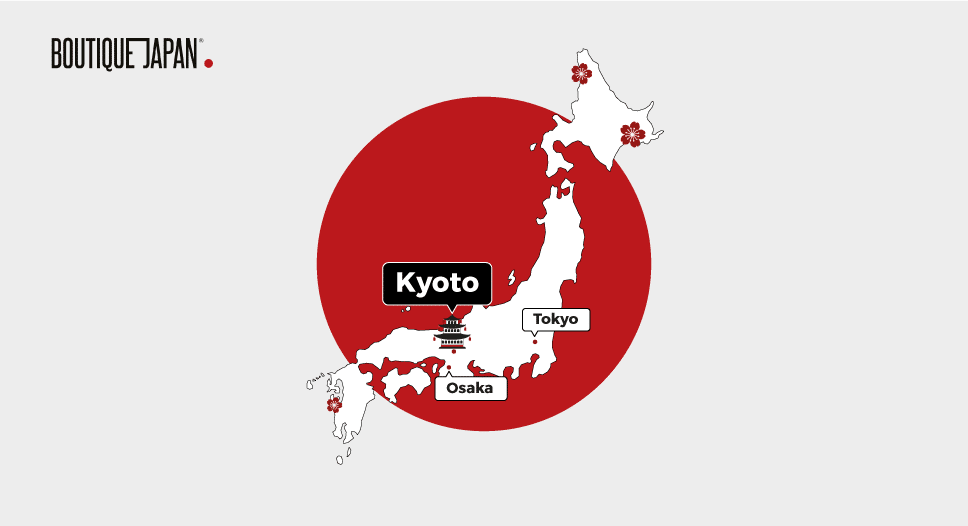
Getting to Kyoto
Kyoto’s convenient location and excellent transport links make the city extremely easy to access. Here’s all the information you need to get here.
Where in Japan is Kyoto?
The city of Kyoto is located in Kyoto Prefecture, in the southwest of Japan’s main island of Honshu. It lies in the Kinki region, commonly known as Kansai, which also includes Osaka, Nara, Wakayama, Hyogo, Mie, and Shiga prefectures.
How to Get to Kyoto
Kyoto doesn’t have an airport, so if you’re flying, you’ll want to use either Kansai International Airport (KIX) or Itami Airport (ITM). Both of these are in nearby Osaka prefecture, with KIX handling both international and domestic flights and Itami domestic only. Getting to Kyoto city from either airport is easy, with private transfers, taxis, trains, and airport limousine buses all available.
If you’re coming to Kyoto from another city in Japan, traveling by rail is often preferable to internal flights (with the exception of far-flung prefectures like Okinawa or Hokkaido). Japan’s rail system is one of the best in the world, and using it is part of the fun of traveling here! The shinkansen (bullet train) is an extremely efficient and pleasant way to travel from further east or west in Honshu, while the limited express train is best for those coming from Kanazawa.
How to get from Tokyo to Kyoto
Many people combine a trip to the ancient capital with a visit to the modern one, and travel from Tokyo to Kyoto is a breeze. While it is possible to fly, the JR Tokaido shinkansen runs directly from Tokyo Station to Kyoto Station in just over two hours – compared to 6-9 hours by road – and offers views of Mount Fuji on clear days. Travel on all but the fastest bullet trains is also covered by the Japan Rail Pass.
How to get from Osaka to Kyoto
With all the rail options available, travel between Kyoto and nearby Osaka city couldn’t be easier. The quickest and most comfortable is again the shinkansen, whisking you directly from Shin-Osaka Station to Kyoto Station in just 15 minutes. Alternatively, if you’re coming from Osaka Station, the JR Special Rapid service gets to Kyoto in about 30 minutes. The Hankyu line is convenient for traveling to and from Arashiyama and other areas in western Kyoto, and taxis are a convenient option if you have luggage or aren’t near a station.
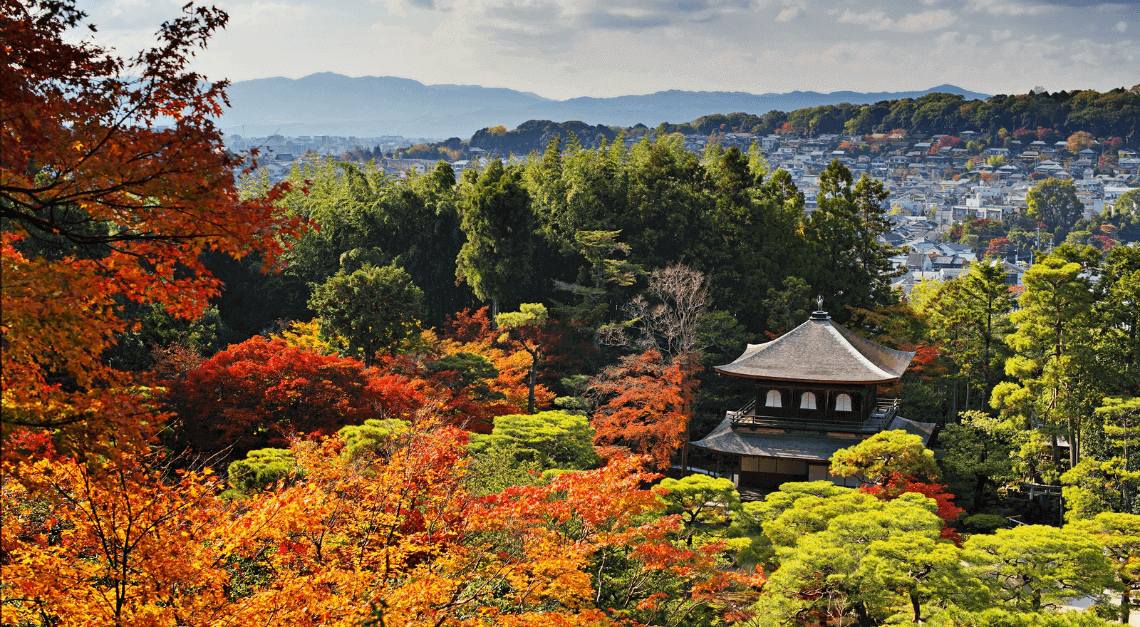
Kyoto Weather, Seasons, and When to Visit
Kyoto is a year-round destination, with each season bringing particular highlights. Choosing when to visit is largely a matter of deciding which time of year you’d personally enjoy the most.
Spring can be quite lovely, especially during the fleeting beauty of sakura (cherry blossom) season. Consequently, it’s also one of the busiest and most expensive times to visit. Finding accommodation can be tricky, and the timing of the blossoms is hard to predict. Avoid the Golden Week holiday at the end of April and beginning of May as many Japanese people travel during this time, making it particularly crowded and pricey.
The Japanese summer is very hot and humid, especially in Kyoto, due to its location in a basin encircled by mountains. However, the plentiful matsuri (festivals) and fireworks displays that take place make it a fun time to visit. The rainy season runs from mid-June to mid-July, but it’s relatively mild and doesn’t rain every day. Typhoon season peaks in late summer, but again doesn’t usually cause many problems.
Autumn in Kyoto is another lovely time to visit, thanks to the comfortable weather and vibrant fall colors on display. Just like spring, however, this leads to increased costs and large crowds – particularly in November.
Winter travel in Japan can be rather cold, but this makes it one of the quietest seasons. The only exception is the New Year’s holiday, another period of increased crowds and prices. Many restaurants, shops, and other attractions are also closed from the end of December until a few days into January.
How Long Should I Spend in Kyoto?
The short answer is: as long as possible! While some say it’s possible to “do” Kyoto in just two nights, an itinerary like this would be very rushed, and Kyoto is a city that rewards those who take their time.
We suggest spending at least three or four days in Kyoto to see some highlights and immerse yourself in the atmosphere of the city. Check out some of our sample itineraries for inspiration.
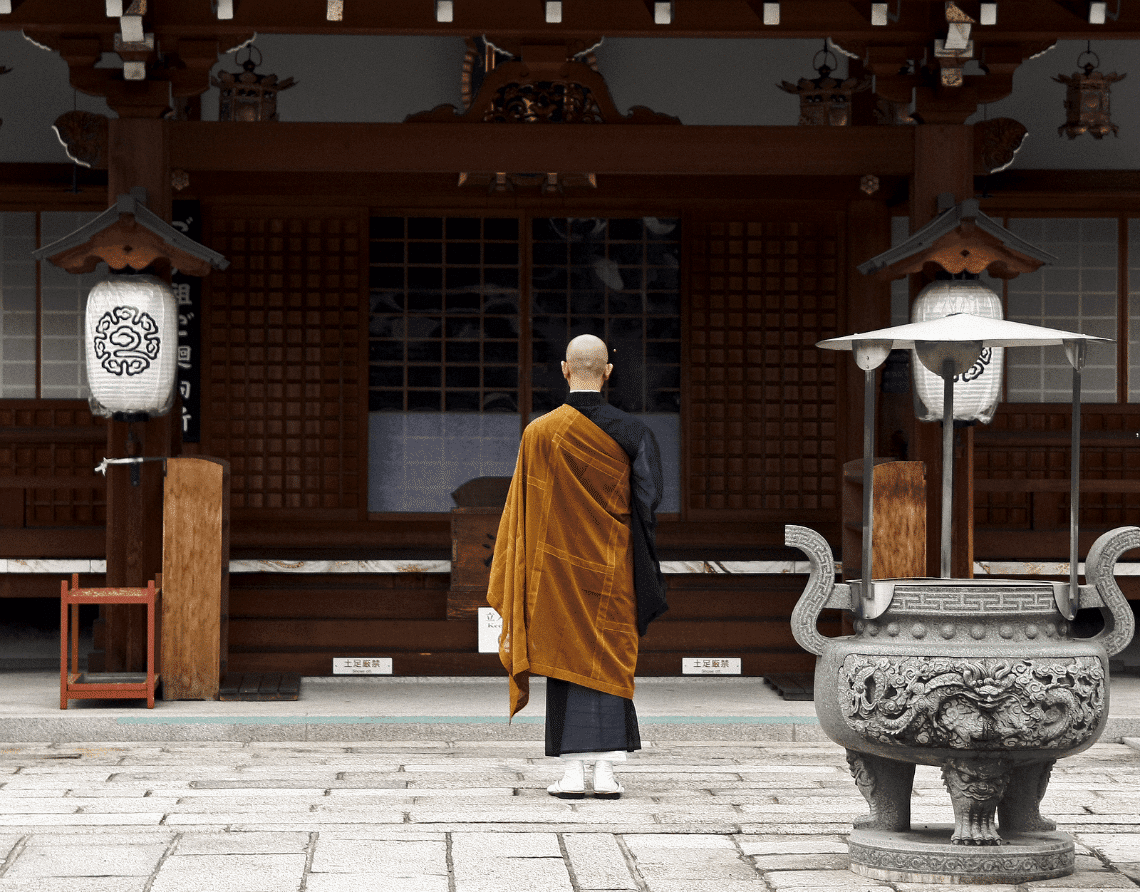
Kyoto’s History
Formally known as Heian-kyo, Kyoto was Japan’s capital and the residence of the Emperor from 794 until 1868.
This rich heritage is evident throughout the city, in awe-inspiring temples and shrines that host traditional festivals dating back hundreds of years, and historic neighborhoods where lantern-lit alleyways are lined with original machiya townhouses. Many of these machiya are now home to atmospheric teahouses and sweet shops, or artisan craft workshops where masters hone their skills in pottery, lacquerware, textiles, and other ancient arts.
Kyoto is one of the best places in the country to immerse yourself in traditional Japanese culture. You can take part in an authentic tea ceremony at a historic teahouse, enjoy utterly refined kaiseki cuisine, learn meditation at a Zen temple, visit an artisan studio to see how local arts and crafts are created, or tour a sake brewery and sample their finest tipple. The old adage that’s there’s something for everyone really proves true in this city.
The city’s appeal doesn’t just lie in the past, though. One of the ten largest cities in Japan, Kyoto is also a hotbed of creativity and modernity. From craft beer brewpubs and hip new cafes to art galleries and small boutiques run by the coolest young designers, Kyoto continues to be at the forefront of Japanese culture and one of the world’s most rewarding destinations.
Exploring Kyoto’s Historic Neighborhoods
One of the best ways to immediately immerse yourself in the ancient capital is by wandering on foot (or cycling) through some of Kyoto’s preserved historical districts. To get you started, here are a few of the most charming and picturesque:
- Higashiyama: An expansive district in eastern Kyoto, the Higashiyama’s traditional lanes are home to numerous landmarks, including Kiyomizu-dera, Yasaka Jinja, and the Philosopher’s Path, as well as countless smaller temples and shrines. The area is so large you could easily devote multiple days to it.
- Gion: Kyoto’s best-known geisha district, Gion is a maze of backstreets and intrigue that is particularly beautiful in the evening when the lanterns are lit. For a less popular alternative, wander into the nearby Miyagawacho.
- Arashiyama: A scenic riverside area at the base of the mountains in western Kyoto, Arashiyama is renowned for its ethereal bamboo grove and the stunning Tenryu-ji temple.
- Central Kyoto: While less polished, Kyoto’s city center is also full of charm, with traditional shopping arcades like Teramachi and Kawaramachi, and the famous Nishiki Market, along with many less popular areas worth wandering into.

Kyoto’s Best Temples and Shrines
Most of our travelers prefer to visit one or two wonderful temples and shrines, to avoid being “templed out.” You’re really spoilt for choice when it comes to temples and shrines in Kyoto, with around 2,000 spread out across the city. So whether you’re after an iconic landmark or a hidden sanctuary, you’re guaranteed to find at least one you love.
We’ll start with a rundown of the big hitters, but bear in mind that they attract huge numbers of visitors. Try to go on a weekday, early in the morning or late in the day, to avoid the heaviest crowds.
- Fushimi Inari Taisha: One of Kyoto’s most famous locations, this shrine features endless tunnels of vermillion torii gates leading up the forested mountainside.
- Kinkaku-ji: If you can avoid the crowds, the sight of this dazzling gold pavilion surrounded by pine trees and reflected in the pond below is breathtaking.
- Ginkaku-ji: The silver pavilion and its serene gardens are the perfect embodiment of the Japanese aesthetic wabi-sabi, which finds beauty in impermanence and imperfection.
- Kiyomizu-dera: This expansive temple complex has plenty to explore, from a waterfall that bestows longevity and other benefits on those who drink from it to a 13-meter-high balcony with panoramic views.
- Yasaka Jinja: A lively and colorful shrine in the heart of Gion, this famous landmark looks especially magical in the evening when all its lanterns are lit.
For a little more breathing room, try these slightly lesser-known but by no means less impressive spots.
- Hosen-in: This temple is home to a blissfully peaceful garden, which contrasts strikingly with the ceiling constructed from floorboards stained with the blood of defeated samurai.
- Kodai-ji: An attractive temple complex, Kodai-ji offers the chance to experience illumination events and a bamboo grove with a fraction of the usual crowds.
- Kennin-ji: Kyoto’s oldest Zen temple features striking murals of dragons adorning its ceiling and sliding doors, as well as stunning gold leaf folding screens depicting the wind and thunder gods.
- Heian Shrine: One of Kyoto’s newer shrines, Heian’s entrance is marked by a huge red torii gate, and the gardens within are a delight to stroll around.
- Yasaka-no-to Pagoda: A landmark of the Higashiyama district, Yasaka-no-to offers the rare opportunity to see inside a pagoda.

Other Worthwhile Highlights of Kyoto
Along with its temples and shrines, Kyoto has a wealth of other interesting and important sights, including royal residences, tranquil landscaped gardens, fascinating museums and galleries, day hikes, and much more.
- Nijo Castle: A fascinating castle built in 1603, Nijo-jo features intricate architecture and nightingale floors that ‘sing’ when people walk upon them, ostensibly to warn of intruders.
- Kyoto Imperial Palace: Housed in a spacious park in the city center, this walled compound is now open to the public and great for fans of Japanese history to explore.
- Kyoto National Museum: One of Japan’s oldest and most renowned museums, it contains a huge variety of significant cultural artifacts and hosts superb special exhibitions.
- National Museum of Modern Art Kyoto and Kyoto Municipal Museum of Art: These two galleries host several excellent exhibitions each year, featuring a wide range of artwork.
- Katsura Rikyu: One of Kyoto’s finest gardens, here you can lose yourself among mirror-like ponds, winding pathways, and perfectly manicured topiary.
- Saiho-ji: This sublime garden at Koke-dera temple is a lush green wonderland that boasts around 120 varieties of moss.
- The Philosopher’s Path: This pretty and popular canal walk in northern Higashiyama links Nanzen-ji temple and Ginkaku-ji, and gets its name from a Kyoto University philosopher who used to take contemplative strolls along it.
Hike Through Kyoto’s Most Beautiful Natural Scenery
One of Kyoto’s best-kept secrets is how much stunning natural beauty there is to explore. Here’s a selection of our favorite walks for getting out of the hustle and bustle, and seeing a different side of the city.
- Kurama to Kibune: A woodland hike in northern Kyoto, this route connects two traditional villages and takes in the atmospheric mountain temple Kurama-dera.
- Takao to Hozukyo: An attractive 11-kilometer riverside hike, this route includes optional detours to tranquil temples and a magical waterfall hidden in the woods.
- Mount Atago: The highest peak in Kyoto city at 924 meters, this is a tougher hike but rewards you with great views and perhaps one of the quietest shrines in the city.
- Mount Hiei: Kyoto’s sacred mountain, 848-metre Hieizan is home to the gorgeous and expansive Enryaku-ji temple complex. There’s also a ropeway and cable car if you don’t fancy the climb.
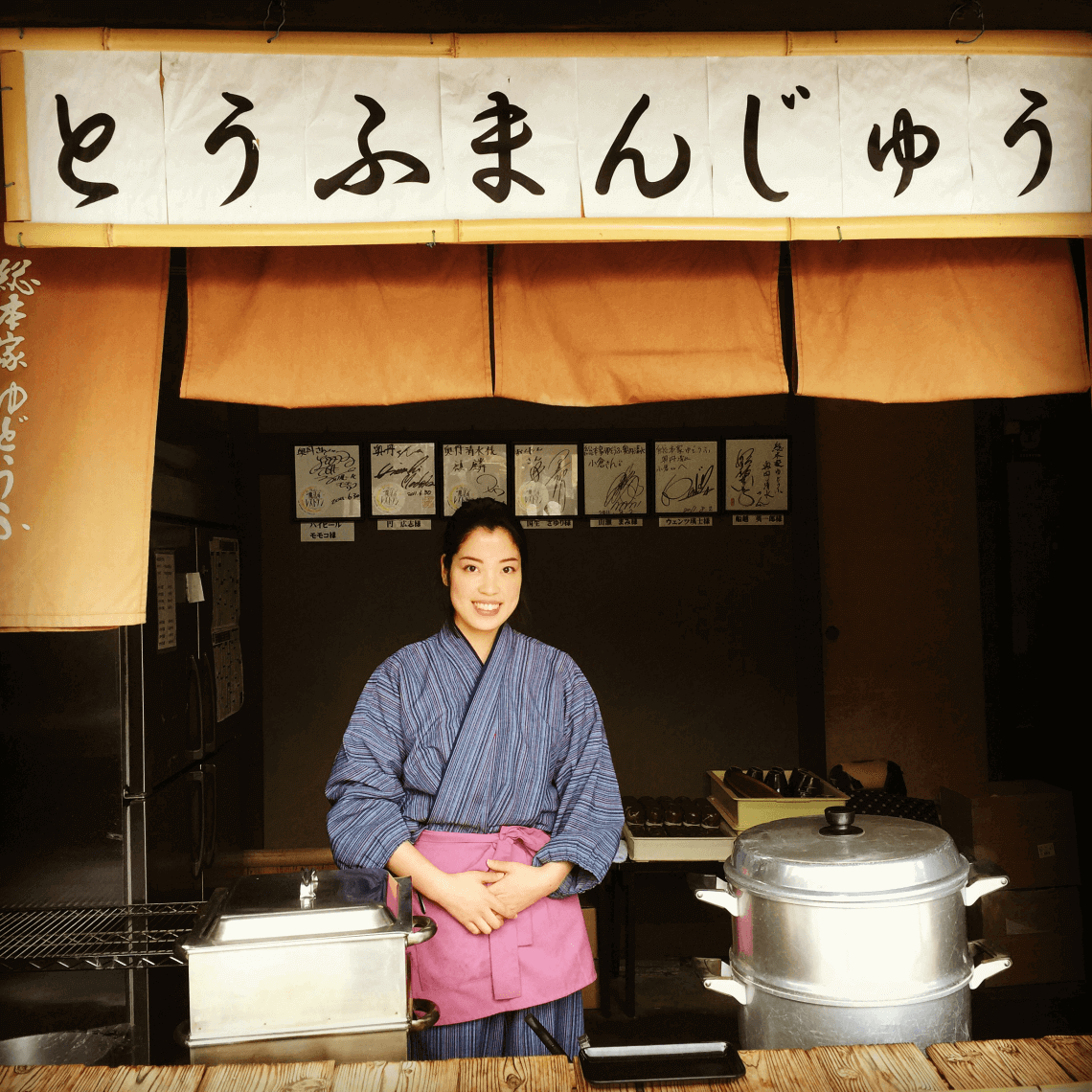
Food in Kyoto
Kyoto has an elegant and refined culinary tradition that emphasizes local, seasonal food. We have an entire blog post on Kyoto’s food scene if you want all the details, but here’s a quick overview.
The city’s most famous fare is kaiseki ryori, an exquisitely presented, multi-course dining experience that showcases the very best of Japanese cuisine. There are a number of high-end restaurants across the city that serve it, including many that are Michelin-starred.
Vegetarians and vegans have plenty of options too. Several temples serve shojin ryori – traditional Buddhist cuisine free from animal ingredients – and there are also a number of modern plant-based restaurants. Tofu is one of Kyoto’s specialties, and very different to the version you find in North America and Europe. Try yuba (tofu skin), agedofu (deep-fried tofu) or yudofu (tofu simmered in broth) to see what we mean!
Kyoto is famous for high-quality green tea, particularly matcha and gyokuro grown in nearby Uji, which is often used to flavor food too. The beautiful wagashi sweets that accompany your cup are perfect for offsetting the tea’s bitterness, and are a work of art in themselves.
If you fancy something stronger, Kyoto’s Fushimi district brews some of the country’s best nihonshu. Finally, for food on the go or culinary gifts head to depachika (department store food halls) or hit up the traditional – albeit crowded – Nishiki Market.
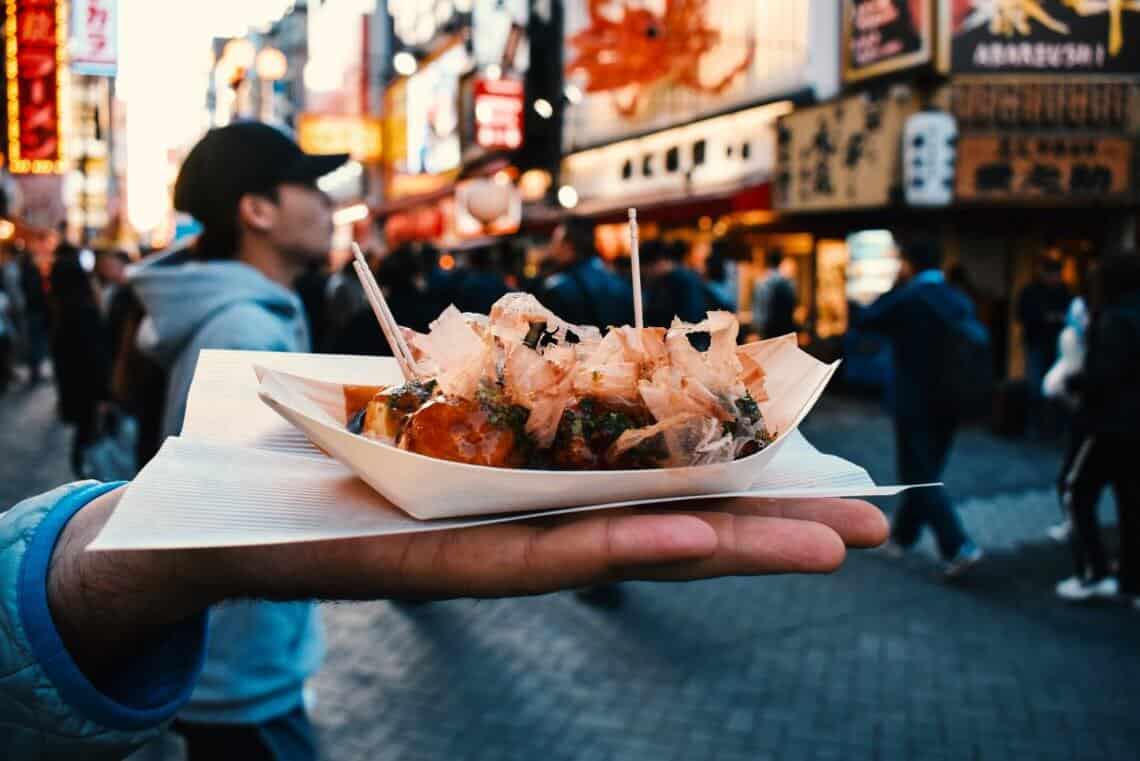
Day Trips From Kyoto
While you could easily spend your whole trip in Kyoto and not get bored, the city is perfectly placed for several great day trips if you want to explore further afield. These are some of the locations we recommend visiting if your schedule allows.
- Nara: The capital before Kyoto, this picturesque city is home to some of Japan’s most significant temples and shrines, as well as 1,200 friendly deer.
- Uji: This town is renowned for producing some of the best quality green tea in Japan, and its stunning Byodoin temple is featured on the back of the ¥10 coin.
- Osaka: Japan’s second city, Osaka is a lively modern metropolis famous for great food, fun nightlife, and friendly residents.
- Shigaraki: One of Japan’s most important pottery centers, rural Shigaraki is also home to the gorgeous Miho Museum and its wonderful collection of art and antiques.
- Kobe: A cosmopolitan port town, Kobe boasts great shopping, hiking, and one of the biggest Chinatowns in Japan.
- Hikone: This pretty castle town is located on the shores on Lake Biwa, Japan’s largest freshwater lake.
- Himeji: A coastal city most famous for its beautifully preserved castle, Himeji is nicknamed White Heron Castle due to its elegant white exterior.
- Hiroshima: This vibrant city has risen spectacularly from the ashes of its tragic past to project a message of peace and hope to the world.
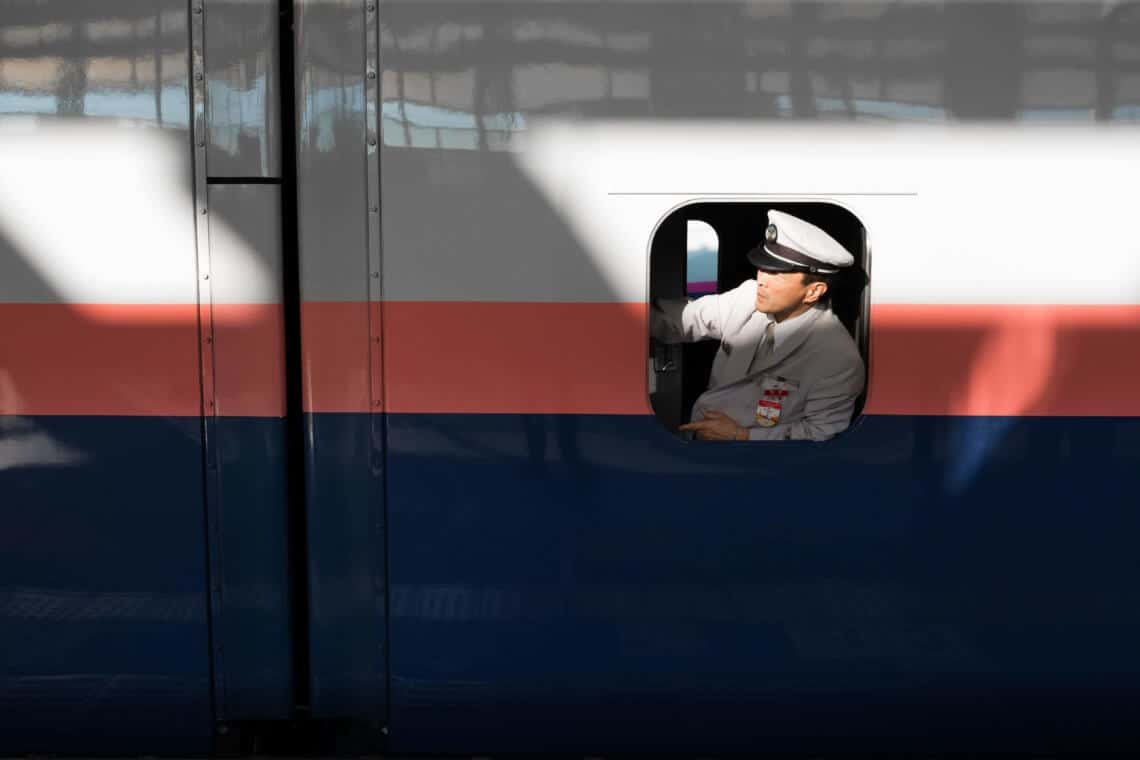
Getting around Kyoto
Kyoto is a relatively compact city and easy to get around. Within the city center, many of the main attractions are within walking distance of each other, plus the flat landscape and scenic architecture mean it’s a pleasure to stroll around. Bicycles are also a good option, with plenty of rental shops dotted around the city.
Taxis are ideal for traveling further afield, and it’s easy to hail a cab on the street or find a taxi rank. Most drivers understand enough English to get you where you want to go, but it can be helpful to have your destination written in Japanese to show them. The doors will open automatically to let you in, and your fare will be clearly displayed on the meter.
In terms of public transport, Kyoto has several train lines, two subway lines, and a dense bus network. If you’re planning to use them, we recommend getting an IC card. These rechargeable passes (Kyoto’s is called ICOCA, but you can also use others such as Tokyo’s Suico and Pasmo) can be purchased at airports and major train stations, then topped up at ticket machines. You can use your IC card on all buses, subways, and trains in Kyoto – and most other regions of Japan – by simply tapping it on the reader (which will be clearly marked with ‘IC’).
Kyoto Buses
Kyoto’s bus network is useful for reaching the north-west and north-east of the city, which includes some big-name attractions such as Kinkakuji and Ginkakuji. It’s worth noting that buses tend to be less comfortable than the train and subway, and popular routes can get very crowded. For that reason, you might want to consider taking a taxi instead, especially if traveling in a group.
Kyoto Subway
Kyoto’s subway system has only two lines: the Karasuma line, which runs north-south, and the Tozai line, which runs east-west. It’s a very efficient way of reaching certain destinations – such as Gion, Nishiki Market, and Nijo Castle – but is otherwise rather limited. Overground trains are also a useful option in many cases, for example, to get to Fushimi Inari Taisha and Arashiyama.
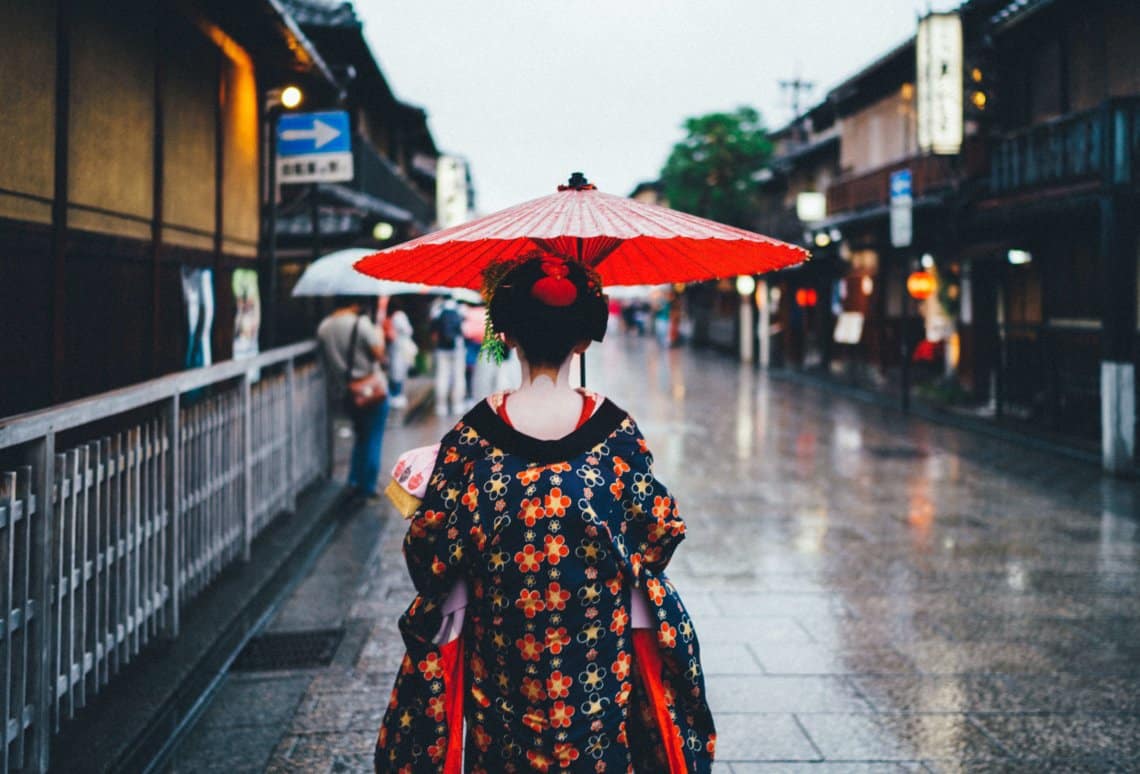
Where to Stay in Kyoto
Kyoto has a variety of accommodation options to suit all travelers, from luxury hotels to stylish machiya townhouses and authentic ryokan inns.
Kyoto’s Best Hotels
Along with Tokyo, many of Japan’s best hotels can be found in Kyoto. For a full, up-to-date list of our favorite accommodations in Kyoto, refer to the Kyoto section of our article on Japan’s best luxury and boutique hotels.
Machiyas in Kyoto
Machiya are traditional Kyoto-style townhouses, and there are beautifully renovated, high-end machiya accommodations throughout the city. Their distinctive wooden architecture and fine craftsmanship make them unique and appealing for those who enjoy holiday rentals. Expect tatami floors and sliding doors, but also modern amenities like Wi-Fi and futuristic Japanese toilets.
Kyoto Ryokans
Staying in a traditional ryokan is a uniquely Japanese experience. While many of Japan’s best luxury ryokans are in more rural parts of the Japanese countryside (where you can truly unwind in ultra-relaxing surroundings), Kyoto is home to a few renowned traditional ryokans including Tawaraya, Hiiragiya, and Kanamean Nishitomiya.
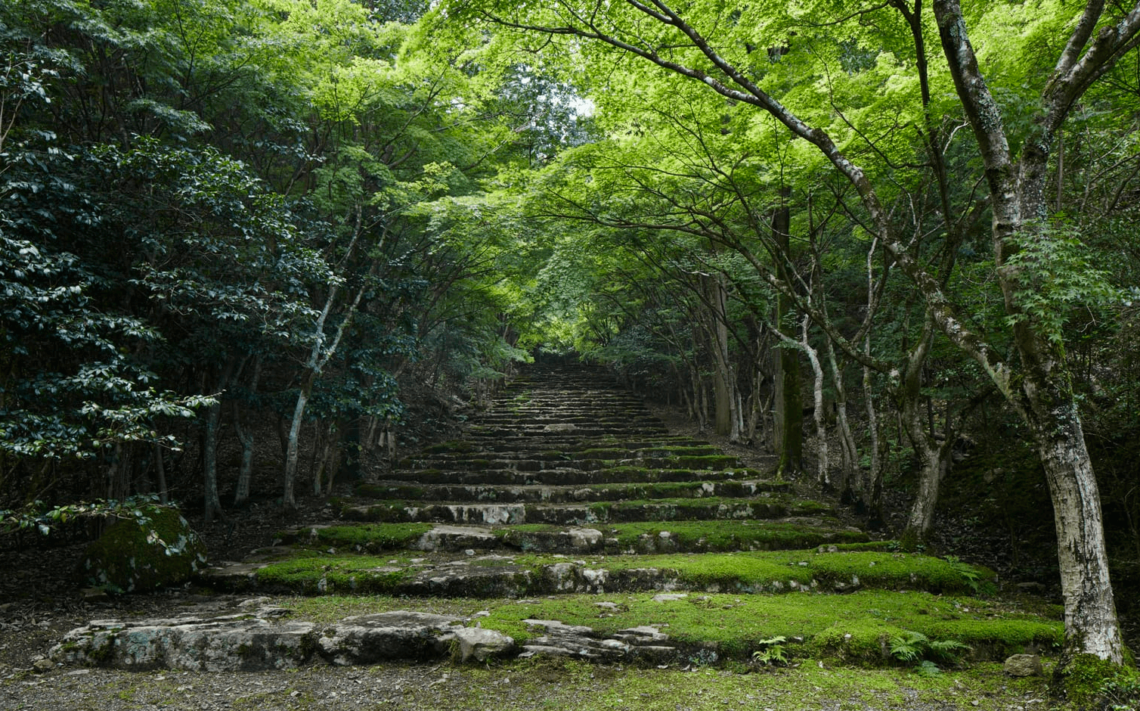
Important Kyoto Events
Japan is renowned for its truly spectacular matsuri (festivals), full of color, tradition, and exuberance. Attending one is a wonderful opportunity to sample authentic street food, see ancient customs brought to life, and experience the country at its liveliest. Kyoto is home to some of the very best matsuri, so if your travel dates line up with any of the following, be sure to check them out.
Gion Matsuri
Perhaps the most famous festival in Japan, Yasaka Shrine’s Gion Matsuri takes place throughout July. It culminates in a stunning parade of exquisitely-designed floats on July 17 and 24, which soar up to 25 meters tall and weigh as much as 12 tons. The city is transformed into a raucous street party for three nights preceding each parade, with music, dancing, food, and revelry in the summer heat.
Hanatoro
The Hanatoro festival is one of Kyoto’s most magical events. Translated as ‘flower and light road,’ it takes place twice a year and sees two of the city’s most beautiful districts illuminated with ethereal lanterns: Higashiyama in March, and Arashiyama in December. Combined with the light sculptures and flower displays, the effect is otherworldly.
Aoi Matsuri
May’s Aoi Matsuri is an elegant and ornate affair, featuring a procession north from the Imperial Palace to Kamo Shrine in elaborate Heian period costume. Thought to have originated as a way to ward off natural disasters, today it features ox-drawn carriages, horseback riders, and musicians playing traditional Heian court music.
Jidai Matsuri
This ‘Festival of the Ages’ celebrates Kyoto’s rich heritage through a photogenic reenactment of its storied history. An extravagant parade travels from the Imperial Palace to Heian shrine, with around 2,000 people taking part. Participants dress in historically accurate costumes from Kyoto’s thousand-year reign as the capital of Japan, including samurai warriors, aristocrats, and geisha.
Kyoto flea markets
As well as festivals, Kyoto’s temples, shrines, and parks also play host to some popular flea markets. Here you can browse all manner of interesting stalls, from antiques and crafts to clothes and plants. Some of the best to visit are Toji temple’s Kobo market and Kitano Tenmangu shrine’s Tenjin Ichi market.
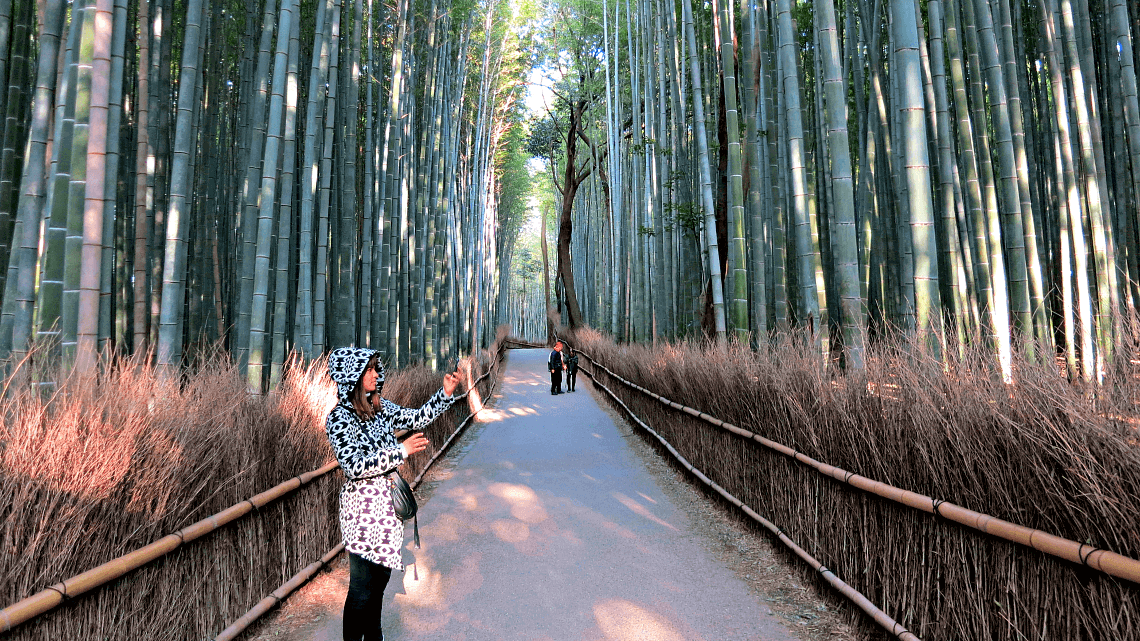
Embark on a Once-in-a-Lifetime Trip to Japan
Hopefully our guide to Kyoto has been useful and helps you find unique and memorable experiences for your Japan itinerary.
If you are looking to embark on a once-in-a-lifetime trip to Japan, we have more resources that can help. Start by checking out our sample travel itineraries and learning about our process of crafting customized trips for travelers seeking unique, authentic experiences.


